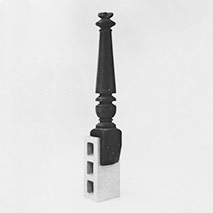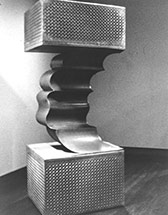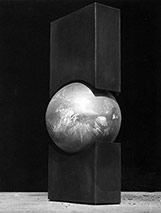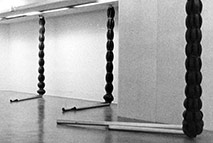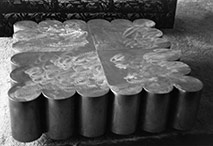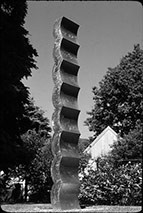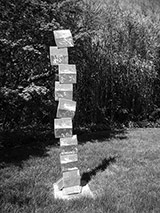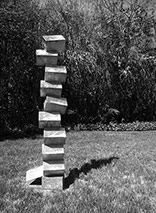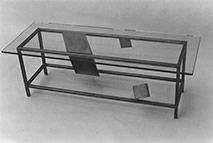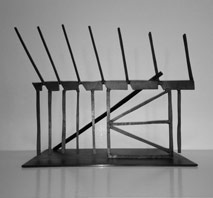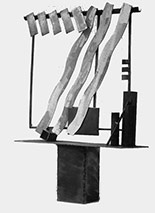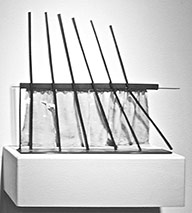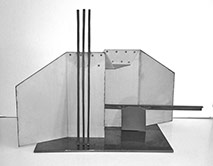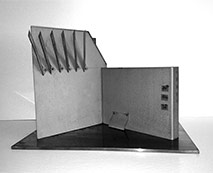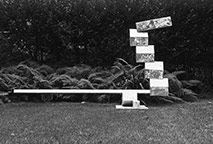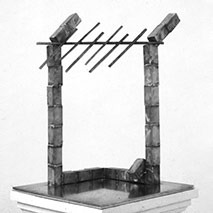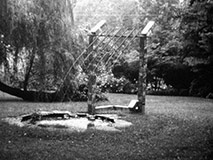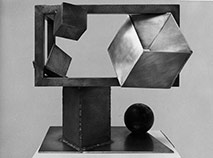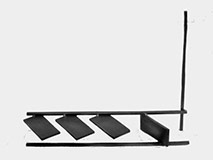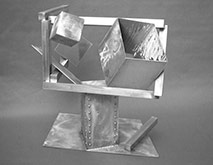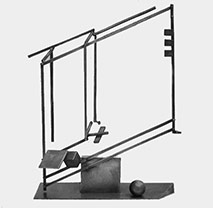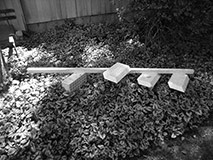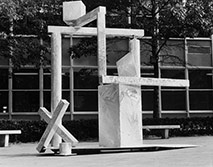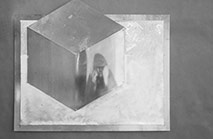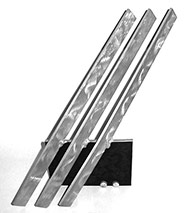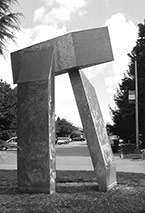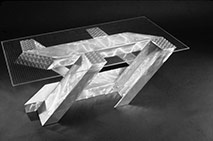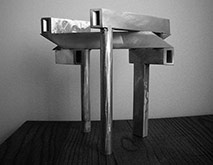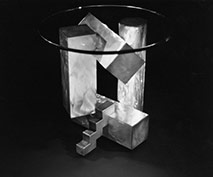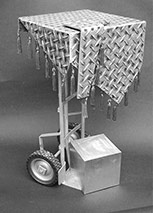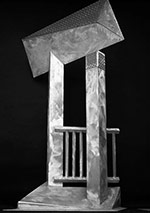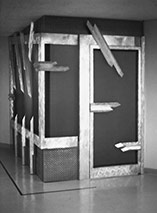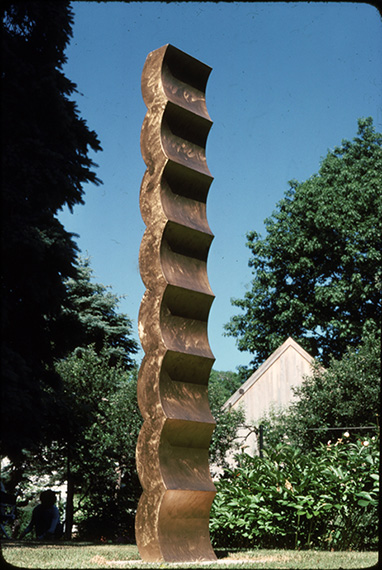 Cloud Column 1973
Cloud Column 1973
Architectonic 1973-1981
After several years of touring the country with his sound sculptures, David Jacobs’ life became more settled in the early 1970s, and he began building a large studio adjacent to his home in Sea Cliff in 1972. Perhaps reflecting this grounded domesticity, his work became more physically stable and architectonic, though it was typically characterized by deliberate spatial ambiguities. A 1975 series of tabletop “Studios”, for example, are poised between architectural maquettes and geometric abstractions. These schematic structures appear to describe the walls, windows, and rafters of an atelier, while some of the linear elements suggest penetrating shafts of real and metaphorical light.
Jacobs received numerous private and public commissions during this period, which allowed him to explore similar forms on a much larger scale. The monumental Skater Gate (1979), for example, reinvents the classical arch for the campus of Hofstra University. While two of its enormous aluminum wedges pinch a third element into a post-and-lintel structure, the beveled square tips generate contradictory moments of apparent flatness as viewers move around the sculpture.
